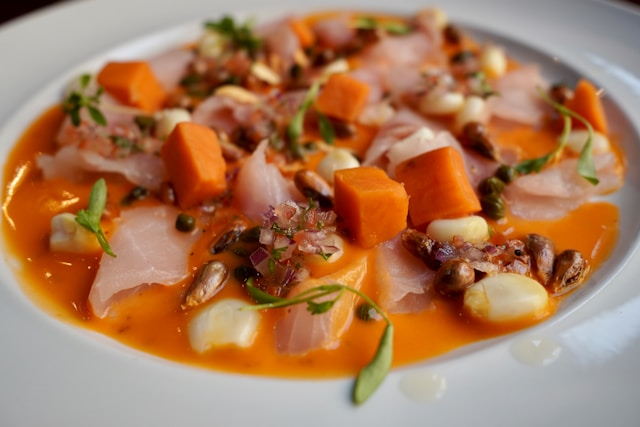Key Takeaways:
- Fusion cuisine exemplifies the synergy of culinary traditions to create innovative flavors and experiences.
- Globalization significantly contributes to food culture evolution, making diverse ingredients and methods more accessible.
- The popularity of fusion cuisine highlights consumer openness to diverse food experiences and represents a growth opportunity in the culinary business.
Table of Contents:
- Introduction to Global Cuisine Fusion
- The Art of Combining Flavors
- Fusion Cuisine in the Modern Culinary Scene
Introduction to Global Cuisine Fusion
The idea behind global cuisine fusion is to create a harmonious combination of different culinary traditions that may have originated in contrasting parts of the world. It represents a culinary creativity that elevates dining to an art form, where chefs become the artists who paint with flavors on the canvas of our palates. One such place, where these intriguing flavors of the world converge, can be experienced at an ethnic food restaurant San Diego, CA. There, patrons embark on a gastronomic journey, discovering the quintessence of global cuisine fusion.
The roots of this culinary practice stretch back through the annals of history, charting a course along ancient trade routes where the earliest forms of food fusion began. It is the story of sailors, merchants, and immigrants who carried their homeland’s flavors and amalgamated them with the new and exotic tastes encountered on their voyages.
These historical convergences have laid the path for modern fusion cuisine, developing a diverse culinary landscape. Celebrated locales around the globe are recognized for their innovative approaches to blending culinary customs, illustrating how time-honored traditions can find new life when intertwined with different cultural threads.
The Art of Combining Flavors
Mastering the art of flavor pairing in fusion cuisine requires an intuitive understanding of the interplay between tastes. Chefs must be familiar with various spices and cooking styles and have the finesse to blend them without overpowering the dish’s inherent character. Its intricate balancing ACTs the boundary of culinary arts, crafting a harmony that can sing to one’s taste buds while reflecting the chef’s vision for the dish. It’s an experiential venture that necessitates a bold foray into the uncharted realms of taste.
A culinary explorer will note that some of the most celebrated fusion dishes resonantly align the bold with the subtle, bringing about an intriguing and relatable composition, something entirely new yet comfortingly familiar. Examples are as varied as the cultures they represent: the fusion of creamy Indian curries with robust French baking techniques to create a curried chicken pot pie showcases the endless potential of cross-cultural collaboration.
These gastronomic mosaics demonstrate that the kitchen is a multicultural meeting ground. It is heartening to witness traditions merging at the dining table, embodying the true essence of fusion cuisine as a sublime vehicle for cultural celebration. This spirit of experimentation and expression through food continues to draw curiosity and applause in culinary destinations worldwide.
Fusion Cuisine in the Modern Culinary Scene
Contemporary fusion cuisine draws from inexhaustible sources of inspiration. Chefs worldwide endeavor to blur the traditional boundaries that once segregated culinary traditions. The innovators curate memorable dishes that elevate fusion cuisine to an immersive cultural experience, often revealing unexpected commonalities between disparate cuisines. As they challenge and expand palates, these culinary artists are rewriting the narrative of what constitutes modern dining.
Modern diners hunger for novelty, and the culinary landscape has responded with enthusiastic innovation. Fusion cuisine showcases the full spectrum of creativity available in the kitchen, evolving daily with new concoctions that playfully defy categorization. The insights of Eater’s retrospective on fusion cuisine’s past and its predictions for its future portray a vivid tapestry of flavors that continues to expand alongside the fluid dynamics of the world’s sociocultural fabric.
Fusion cuisine encapsulates the essence of the 21st-century culinary ethos: a willingness to explore, adopt, and adapt, creating experiences that resonate with our progressively globalized identities. Food has become a powerful language of connection, and fusion cuisine speaks that language with eloquence and a spirit of endless possibility.





